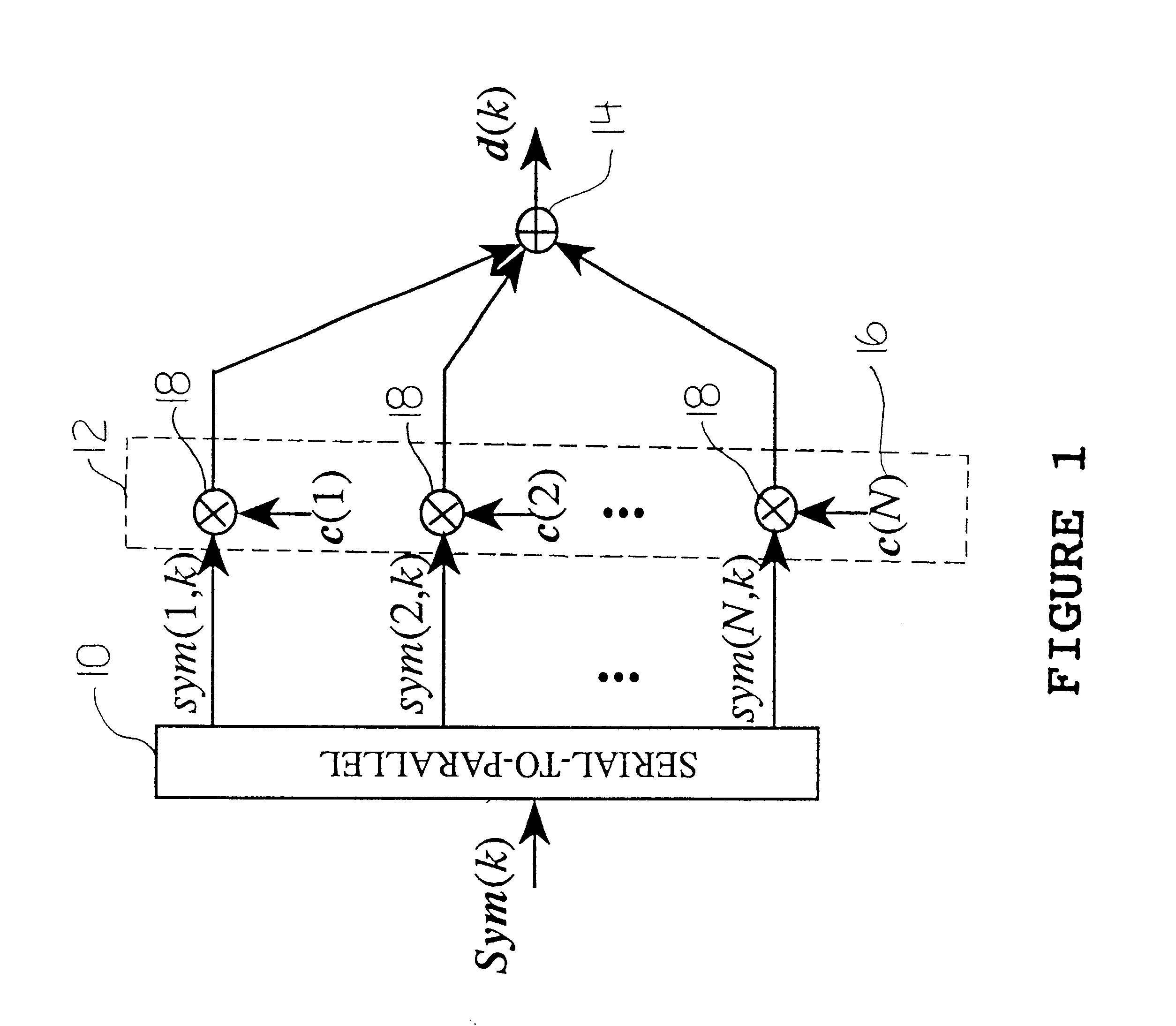Multicode direct sequence spread spectrum
- Summary
- Abstract
- Description
- Claims
- Application Information
AI Technical Summary
Benefits of technology
Problems solved by technology
Method used
Image
Examples
Embodiment Construction
FIG. 1 illustrates the transmitter of the MC-DSSS modulation technique generating the kth MC-DSSS frame bearing N symbols of information. The symbols can be either analog or digital.
A converter 10 converts a stream of data symbols into plural sets of N data symbols each. A computing means 12 operates on the plural sets of N data symbols to produce modulated data symbols corresponding to an invertible randomized spreading of the stream of data symbols. A combiner 14 combines the modulated data symbols for transmission. The computing means shown in FIG. 1 includes a source 16 of N direct sequence spread spectrum code symbols and a modulator 18 to modulate each ith data symbol from each set of N data symbols with the I code symbol from the N code symbol to generate N modulated data symbols, and thereby spread each I data symbol over a separate code symbol.
FIG. 2 illustrates the receiver of the MC-DSSS modulation techniques accepting the kth MC-DSSS frame and generating estimates for th...
PUM
 Login to View More
Login to View More Abstract
Description
Claims
Application Information
 Login to View More
Login to View More - R&D
- Intellectual Property
- Life Sciences
- Materials
- Tech Scout
- Unparalleled Data Quality
- Higher Quality Content
- 60% Fewer Hallucinations
Browse by: Latest US Patents, China's latest patents, Technical Efficacy Thesaurus, Application Domain, Technology Topic, Popular Technical Reports.
© 2025 PatSnap. All rights reserved.Legal|Privacy policy|Modern Slavery Act Transparency Statement|Sitemap|About US| Contact US: help@patsnap.com



